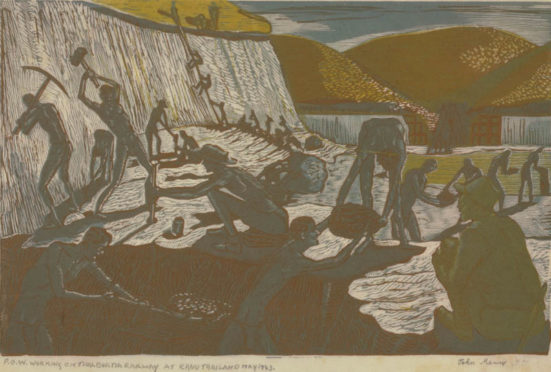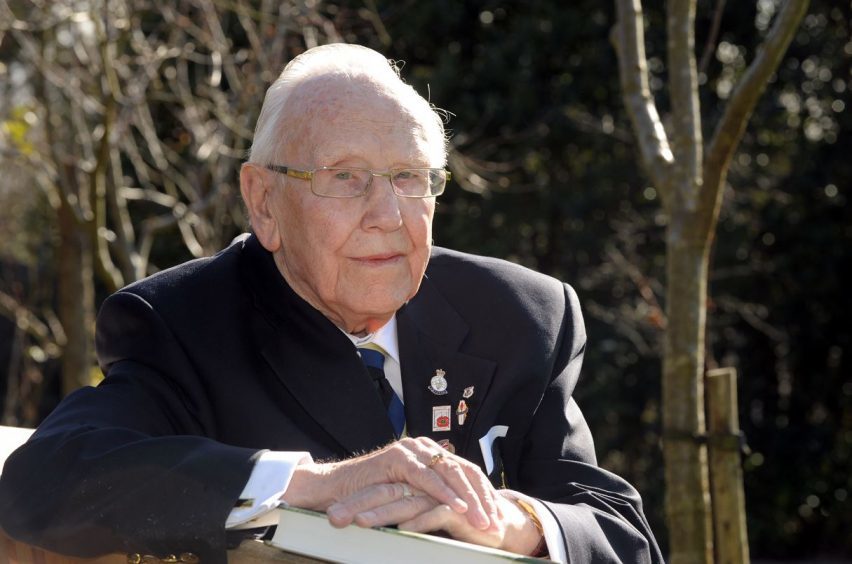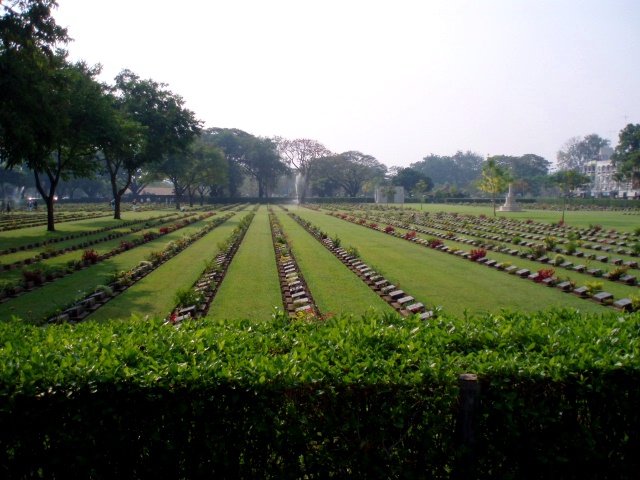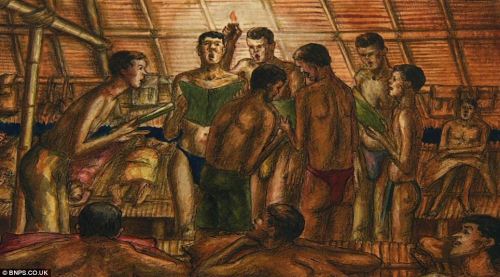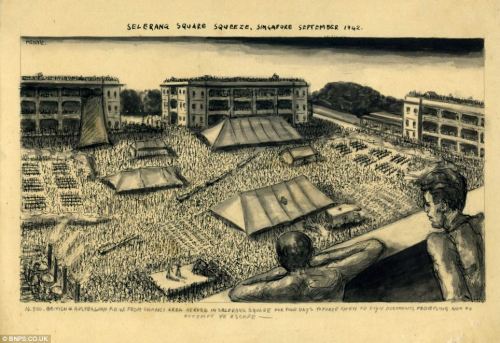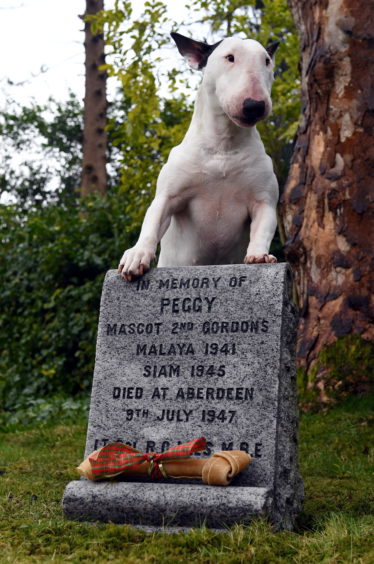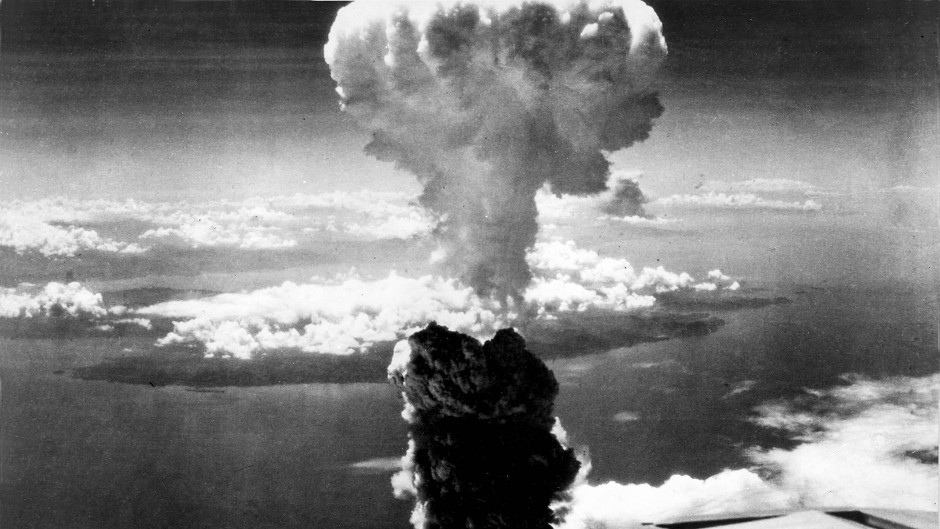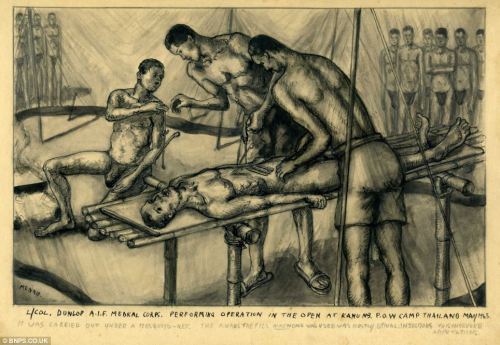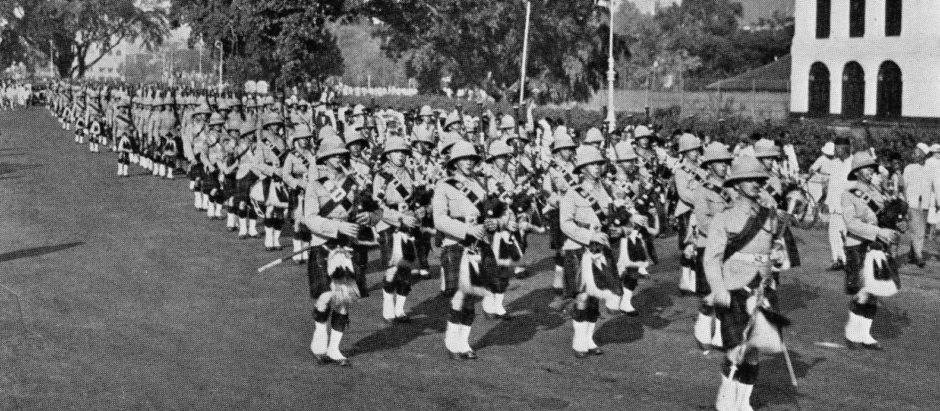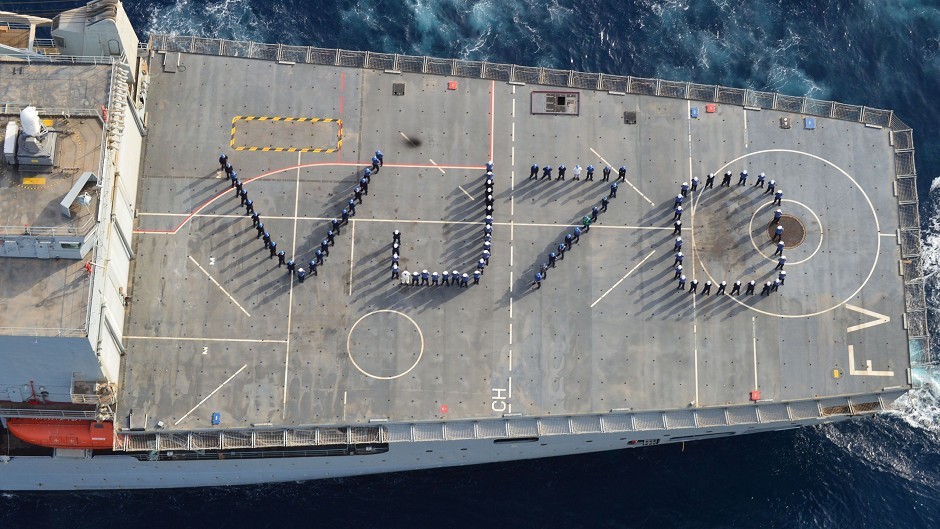They were the soldiers who found themselves in the midst of a military disaster – and who often regarded themselves as the Forgotten Army at the end of the Second World War.
But, although few of the Gordon Highlanders who were captured after the fall of Singapore are still alive, Britain will take time this month to commemorate the 75th anniversary of VJ Day – on August 15 – when the Allies finally defeated imperial Japan.
The thousands of Scottish troops who were captured came from every part of the north and north east and their incarceration in prison camps and the terrible conditions they endured meant those who did return were often psychologically damaged.
Yet some were determined not to let their experiences define them. Men such as Alistair Urquhart from Aberdeen, who wrote a book called The Forgotten Highlander, which chronicled his extraordinary life: and Granite City artist, John Mennie, who depicted the often harrowing scenes he witnessed of death and deprivation.
Alistair’s litany of experiences during the hostilities in the Far East would have been dismissed as unbelievable by most Hollywood film-makers.
When he left Scotland in 1939, at 20, he had been a fit and healthy man with an athletic gait, weighing in at 135 pounds. Yet, six years later, he was a skeletal 82 pounds, had been beaten repeatedly by his captors, suffered from cholera, malaria, typhus and beriberi, and had witnessed the deaths of many of his colleagues.
That was traumatic enough, but he didn’t just spend two years as a slave labourer while helping to build the Death Railway in Burma and the bridge over the river Kwai, which was later turned into a famous film he regarded as “sanitised”.
On the contrary, even as he was being shipped back to Japan from the jungle in the crowded, filthy squalor of a “hellship”, the vessel was torpedoed by an American submarine, whose crew was unaware it was carrying Allied troops.
He drifted, alone, for five days in the South China Sea before being picked up by a Japanese whaler and taken to Nagasaki, where he was used as a forced labour in a shipyard. And he was on the outskirts of the city when it was reduced to rubble by the dropping of the second atomic bomb.
He survived the blast in August 1945, but admitted it was a very different person who returned to the north of Scotland from the optimistic young lad who had left.
In common with his father, who had fought as a Gordon Highlander at the Battle of the Somme, Mr Urquhart never spoke about his wartime privations for decades afterwards.
Yet his anger at the fashion in which the soldiers in the Far East were, in his view, airbrushed out of history eventually convinced him to write his memoirs.
Unsurprisingly, his recollections were often grim. As he said of the fall of Singapore: “We stood there in the blazing sun, without food, water or shelter, and the horrible reality broke over me in sickening, depressing waves.
“I was part of Britain’s greatest-ever military disaster – just like some 120,000 others of us who were captured in the Battle of Malaya.
“People were dying around me on the railway, but I didn’t really want to know. It was too dispiriting. It was difficult to judge the full toll of casualties and many of us became self-obsessed just to get through the day.
”We all worked so hard at trying to survive that each person became more and more insular as it became more difficult. It required a superhuman effort to keep going.”
Alistair believed his survival owed as much to luck or providence as any special qualities he possessed. But while he never forgave the Japanese troops for their failure to heed the Geneva Convention – and he remained critical, until his death in Dundee, at the age of 97 in 2016, about the lack of recognition given to VJ Day – his story provided a reminder of the extraordinary resilience of many human beings.
On the one hand, he asked: “How does one describe the feelings of a person who has been through something like we had, something no one could ever have envisaged?
“They could never comprehend the depths of man’s inhumanity to man or the awfulness of an existence which consisted of surviving for one day at a time.”
And yet, as he surveyed his memories – in his 90s – this brave fellow was able to reach the conclusion: “Life is worth living and no matter what it throws at you, it is important to keep your eyes on the prize of the happiness that will come.”
John Mennie was another who transcended the travails of life in a series of Japanese prison camps during the war by recording what he witnessed with all the skill he could muster and highlighting the fact that art can thrive in adversity.
John, known to family and friends as Jack, was born in 1911 and grew up at Springbank Place in Aberdeen while training at the city’s Gray’s School of Art, as the prelude to advancing to the Westminster School of Art in London.
But, in common with so many other people of his generation, he recognised his personal goals and ambitions had to take second place to serving his country once the hostilities commenced between the Allies and Germany and Japan.
He joined the Royal Artillery in 1940, but was one of the thousands of troops who were captured when Singapore surrendered to the Japanese forces in February 1942 and he was a prisoner of war until August 1945.
He saw the worst of human behaviour, but he also depicted the comradeship which can thrive when strangers are flung together and recognise the value of common purpose, even as friends and colleagues are dying around them.
John produced a substantial trove during his time as a prisoner of war with more than 50 pieces of work subsequently archived at the Imperial War Museum in London.
His prints were made from lino-cuts of the same size and copied from original drawings in the camps. These were produced on odd bits of paper such as cigarette packets, blank flyleaves found in books and even rifle practice targets.
His evocative works came to fruition in the PoW camps in Changi, Singapore, in 1942, Kanu in 1943, Chungtai and Tamawau in 1944 and Pratchi in Thailand in 1945.
For eight years before the war, he had been working as a commercial artist in London and all his prison-camp confreres helped him by contributing to his meagre stock of materials – pencils, paper and even a Chinese box of child’s watercolour paints came his way and he deployed all these to the best of his abilities.
As a non-smoker, Mr Mennie secured a precious addition to his equipment by bartering 10 cigarettes for a tiny quill brush as part of his kit.
His nephew, Alex Gordon, who lives in Elgin, has worked hard to ensure his uncle’s unique paintings are being shown to a wider audience across the world.
He said: “The Japanese never gave their captives any clothes and they went from the clothes in which they were captured in 1942 to almost complete nudity in 1945.
“After the (Death) Railway was finished in 1943-44, they used PoWs as a labour corps to the Japanese Army and sent them from the camps for various tasks.
“One such camp was an ammunition depot which was near the structure made famous in the film Bridge over the River Kwai.
“These sites were often bombed by the RAF, so the Japanese decided to move the ammunition further east. And the trains were loaded by PoWs to accelerate this.”
Some of their journeys were the stuff of nightmares. Large numbers of prisoners were moved from Changi to Siam, which was a gruelling trek of five days and four nights.
The men were packed into trucks, eight feet wide by 20 feet long – and there were 30 men in one of these vehicles.
The horror of that experience is vividly evoked in one of John’s drawings which shows a bedraggled mass of humanity crammed like sardines onto the floor of the lorry.
Nor was there any respite once they finally limped off the truck.
That was followed by a six-day trip up river on a flimsy barge to Kanu, a mere clearing in the jungle, which had to be transformed into a camp by the prisoners themselves.
When the war ended in 1945, the Aberdonian was working on building fortifications in the east of Thailand at Pratchi.
Understandably, his story attracted plenty of attention when he returned to his native land and attempted to resume his art career.
The Aberdeen Journal was among the publications which carried extensive coverage of the many travails and distressing experiences which the Scot had endured throughout his long period of captivity.
But it also focused on his ingenuity, his never-say-die philosophy and unstinting determination to use whatever resources he could find to create an archive of the graphic scenes which he witnessed at first hand amidst his incarceration.
The report stated: “Drawings which might have cost him his life or stung his Japanese guards into brutal reprisals, were safely concealed for over three years by an Aberdeen man during his ordeal of captivity in the Far East.
”They constitute a unique record of the heroism and the horror of life for British prisoners of war captured at the fall of Singapore and forced to work on the notorious Burma-Siam railway.
”Triumphing over disease and semi-starvation, Lance/Brigadier John Mennie gradually became a man with a mission – to bring back faithful pictorial evidence of what all the prisoners went through.“
The Journal detailed the secretive and often hazardous measures which he employed even as his weight diminished and he was at increasing risk from illness.
It added: “L/Bdr Mennie did two sets of drawings: a documentary series exposing Japanese barbarity and the conditions endured by our POWs and a set of 80 sketch portraits of prison camp comrades.
”The first set, with its damning indictment (of war crimes) was kept in the hollow stem of a bamboo walking stuck and it was never discovered by the enemy.
”The portrait series he kept under a piece of three-ply wood which was used as a rest for his mess tin and, although the Japanese stripped his bed and searched his kit on three occasions, they left the drawings undisturbed.
”Mennie fashioned a little portfolio to hold these portraits and it was this, with its contents, which was seized following a kit inspection in January 1945.
“The enemy declared they would ‘censor’ the portraits and laid them aside in the camp office to be dealt with later. Before leaving the camp, however, Mennie managed to communicate with a comrade who was staying behind.
”He told him where the drawings were and asked him to keep a look out and, if the opportunity arose, he should recover them.
”It was more a counsel of hope than conviction. But, just a little over a year later, all the 80 drawings were safely returned – through the post to the author’s home in Aberdeen.”
John rarely spoke about his memories of the camps. In common with so many of his generation, he had no desire to cause pain to his loved ones.
However, unlike the majority of other soldiers, he had created a body of work which told its own story about his experiences, whether watching soldiers singing Christmas carols together or seeing a colleague undergo a surgical procedure.
He subsequently became a successful artist and spent most of the rest of his life in London, where he met his wife Dorothy, who was with him until his death in 1982.
There were no grand tributes at that stage and it has only happened gradually that people have grown to realise the courage and conviction which he poured into his art.
Mr Gordon said: “The pride and love we have for our uncle is difficult to put into words. It is impossible for us to understand the hardship, filth and deprivation he and his fellow PoWs endured for three and a half years.
“We are fortunate he had the drive, skill and astounding bravery to produce these wonderful art works which could easily have cost him his life.“
Alistair and John were among so many who suffered in the conflict. Even though they have gone, VJ Day is the chance to salute the sacrifice of them and countless others.
